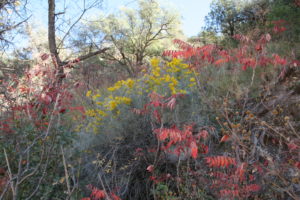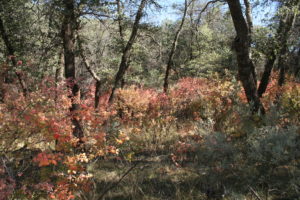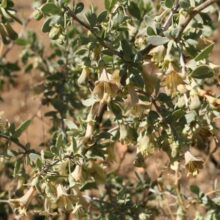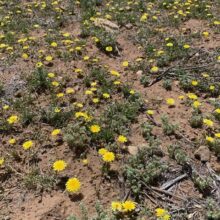

There are around 150 species of Rhus (sumacs) found around the world in temperate regions. They are found in both North and South America and in Arizona we have 8 native species. And in Arizona with the exception of poison ivy they all have edible berries. You can make tart sun teas or dry the berries and grind them up for a condiment to sprinkle over foods. Yum.
In the borderlands of southern Arizona the deciduous species are great fall color and not always red, but orange or yellow as well. And I must say that poison ivy really is spectacular fall color. I like to view it from a safe distance.
Rhus trilobata is now R. aromatic var. trilobata and I think that there are probably a whole lot more varieties. That’s a personal observation. Rhus glabra is still Rhus glabra, but I do notice notice forms with broader leaves in other regions. It may be simply that our local native is adapted to our semi arid country with its skinnier leaves.
A couple notes: Rhus are in the same family as pistacios. Now that you know that, I bet you can see some similarities, especially in Chinese Pistachio, a common landscape plant. The photos were taken in the Chiricahua Mountains near Rucker Canyon. Right hand corner is smooth sumac next to flowering rubber rabbit brush and below left is a stand of three leaf sumac in among oaks.






